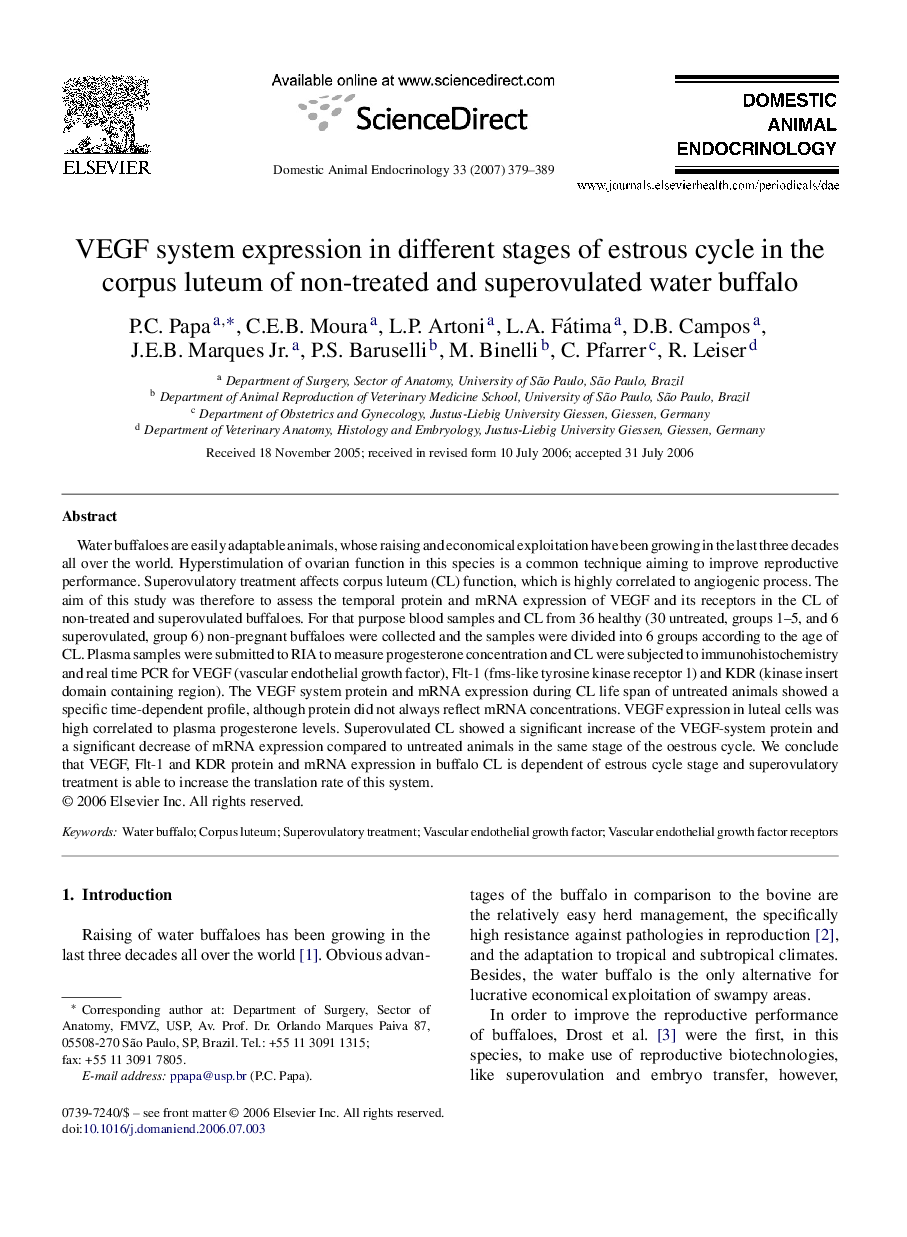| Article ID | Journal | Published Year | Pages | File Type |
|---|---|---|---|---|
| 2394135 | Domestic Animal Endocrinology | 2007 | 11 Pages |
Water buffaloes are easily adaptable animals, whose raising and economical exploitation have been growing in the last three decades all over the world. Hyperstimulation of ovarian function in this species is a common technique aiming to improve reproductive performance. Superovulatory treatment affects corpus luteum (CL) function, which is highly correlated to angiogenic process. The aim of this study was therefore to assess the temporal protein and mRNA expression of VEGF and its receptors in the CL of non-treated and superovulated buffaloes. For that purpose blood samples and CL from 36 healthy (30 untreated, groups 1–5, and 6 superovulated, group 6) non-pregnant buffaloes were collected and the samples were divided into 6 groups according to the age of CL. Plasma samples were submitted to RIA to measure progesterone concentration and CL were subjected to immunohistochemistry and real time PCR for VEGF (vascular endothelial growth factor), Flt-1 (fms-like tyrosine kinase receptor 1) and KDR (kinase insert domain containing region). The VEGF system protein and mRNA expression during CL life span of untreated animals showed a specific time-dependent profile, although protein did not always reflect mRNA concentrations. VEGF expression in luteal cells was high correlated to plasma progesterone levels. Superovulated CL showed a significant increase of the VEGF-system protein and a significant decrease of mRNA expression compared to untreated animals in the same stage of the oestrous cycle. We conclude that VEGF, Flt-1 and KDR protein and mRNA expression in buffalo CL is dependent of estrous cycle stage and superovulatory treatment is able to increase the translation rate of this system.
